How to activate yeast in 3 easy steps
If you want to bake with confidence, learning how to activate yeast is the first step. For some reason, this terrifies about 99% of the people I know. Not just the activating, but the rising, kneading and baking that usually comes with it. But baking soft cinnamon rolls or a loaf of homemade bread won’t happen without it. This the part you don’t want to miss–let me show you how easy it is!
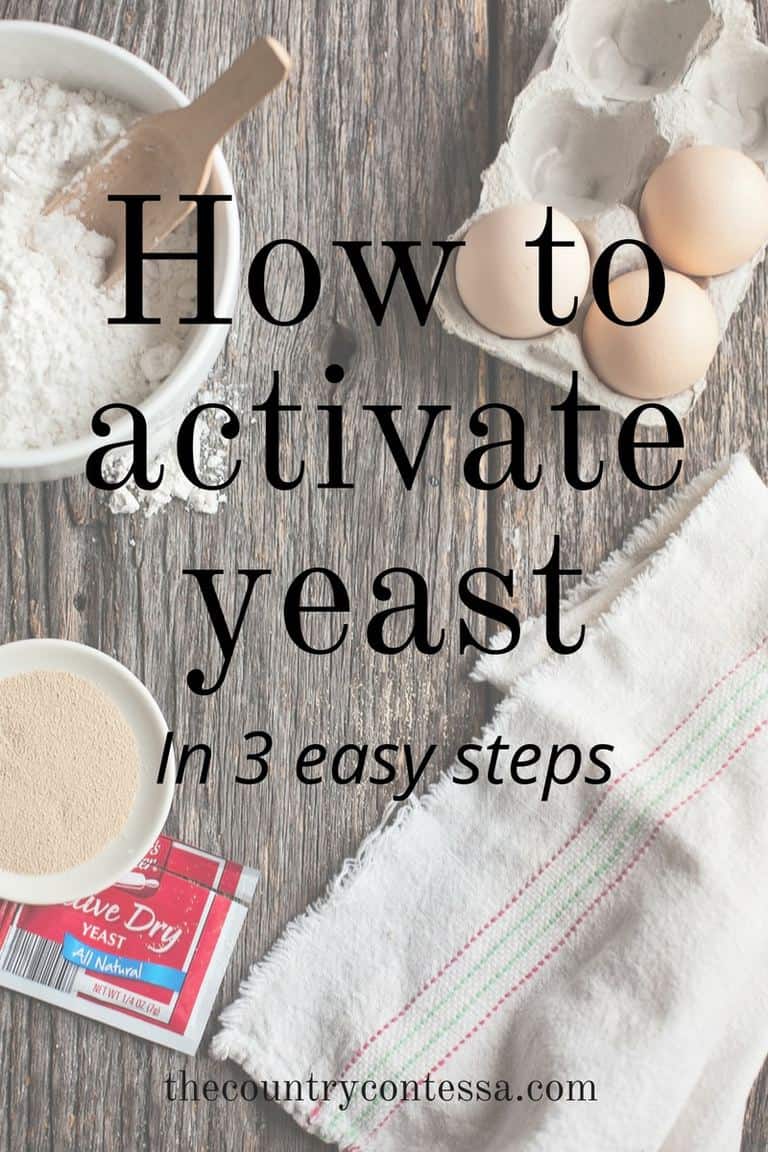
Maybe you’ve heard or lived the horror stories of trying to bake with yeast. You didn’t make bread. You made hockey pucks.
You didn’t make cinnamon rolls, you made petrified stone for your flower bed. Flat, hard, dry stuff that just didn’t do what you thought it would. What went wrong? It was something with your yeast which works as the leavening agent (the thing that makes bread rise).
There are only two things you can do to yeast: 1) not wake it up or 2) kill it. Both of which will make your bread flatter than a flitter. Because we all have absolutely no idea what a flitter is, but it sounds good.
Where do I get yeast?
You’ll find yeast in the baking aisle near the flour. It’s sold in a jar (way too much for most people to use) or in a three pack strip. Simply cut one or two packets from the strip to use as your recipe states. Each packet is about 2 1/4 teaspoons of the jarred kind.
Is there more than one kind of yeast?
Yep. You’ll probably see “fast acting” (sometimes called Rapid Rise) and regular. I just use regular. You aren’t going to save any time with the rapid rise kind really. There’s also fresh yeast, but it’s harder to find and not worth talking about right now.
Before you activate yeast
Before you properly activate your yeast with my method, do me a favor and check the expiration date on the package. Flip over the strip and make sure it’s still in date. Even if it expires that month, you should be fine. Just don’t use it if it’s out dated. It’s probably useless and there’s no point in risking in.
How to activate yeast: Step 1
This is the part that usually gets people, but it’s easy.
Yeast needs warm water to activate. How warm? Experts say about 110 degrees but who’s checking that?
Here’s how I do it: run some tap water until it’s warm. Not hot. Just warm. Now bump the faucet till you can say “Well, that’s definitely hotter than warm. Not so hot I want to wash dishes in it or anything, but hot enough.”
That’s the temperature you want. Fill your cup with the amount of water called for in the recipe (usually a cup) and sprinkle your packet of yeast over the top of the water. You don’t even need to stir it in. That’s what I did in this picture:
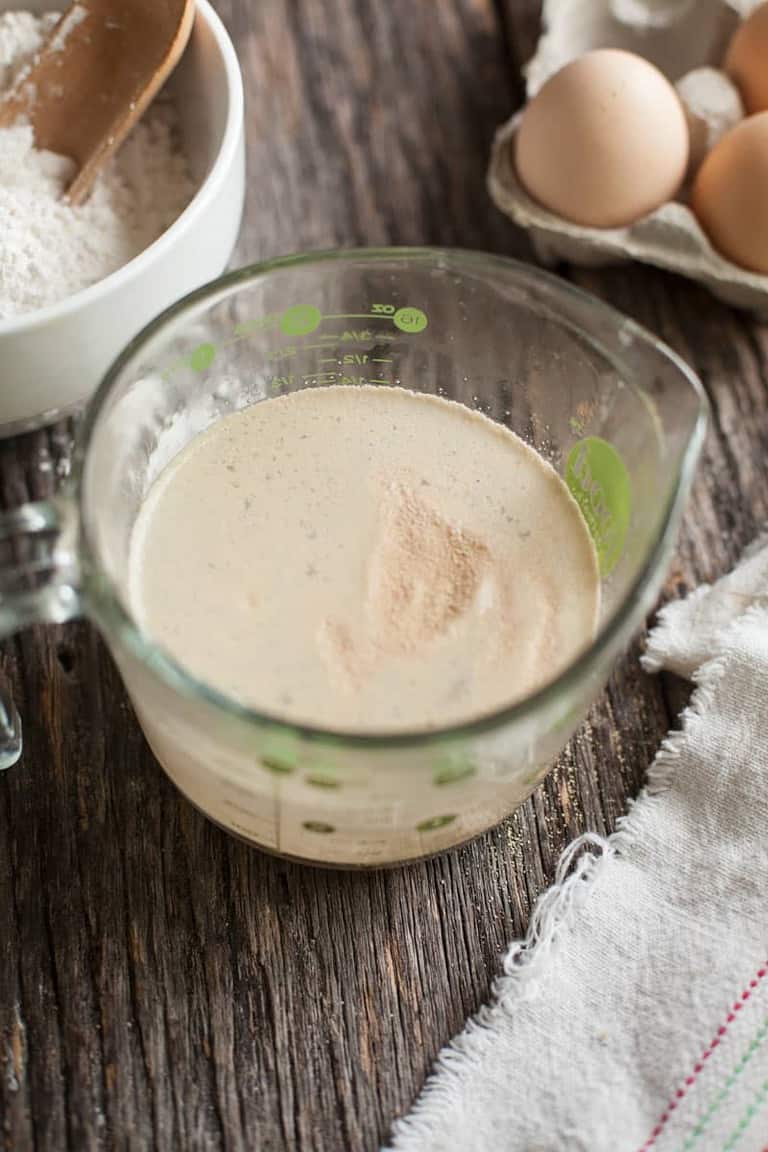
How to activate yeast step 2: Add a little sugar
Once you get the yeast on the water, add about a teaspoon of granulated sugar. Yeast is fed by sugar and this will help it multiply and activate with a little snack in its belly. Basically it speeds up the process.
Drop in the sugar and give it a stir with a spoon. After a couple of minutes it will start to look cloudy and have a little bit of foam on top. Be patient. The time is not yet! It looks like this:
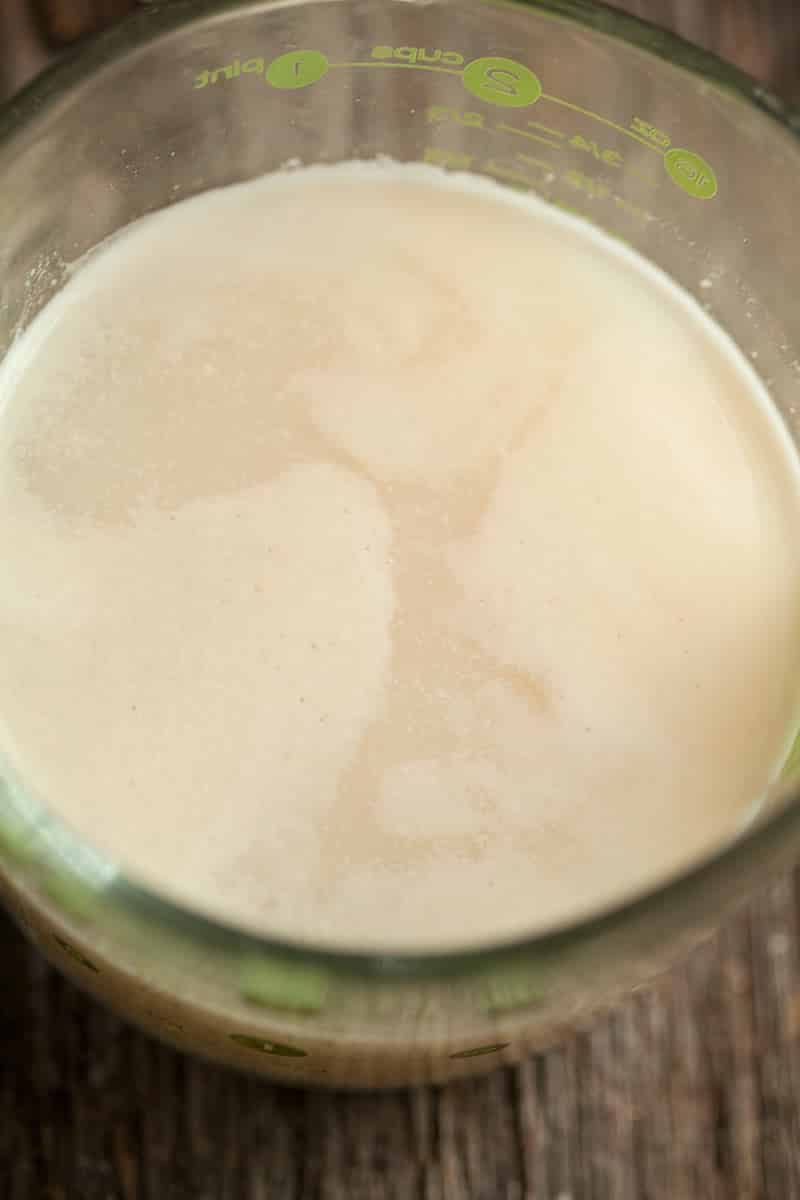
How to activate yeast step 3: Give it time
Depending on how warm your house is and how warm your water is, this step may take longer for some people. TV people say “five minutes” until your yeast starts to foam, but in my house where it’s cool right now, this step can take up to 15 minutes.
Sometimes I just stand there and watch my yeast like a nut case waiting to see something bubble to the top (and it will). When I see that, I just go ahead and throw it in my dough. But if you want to be totally sure, wait for this kind of foam or activity in the cup:
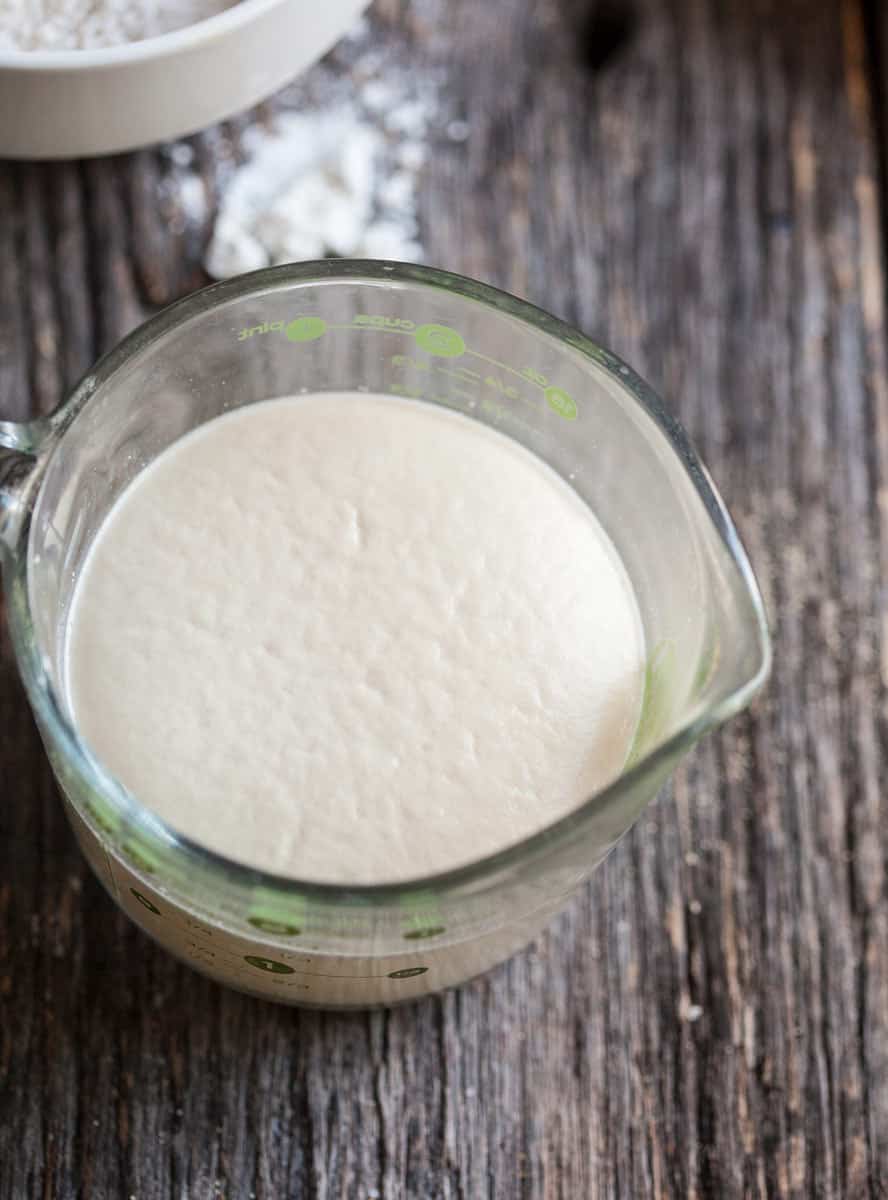
Once you see the foam, you’re ready to use your yeast in any recipe it calls for. If you DON’T see foam and you’ve been patient (given it 15 minutes or so), try again with another packet. If you made your water hot, try reducing that heat a bit and give it another try.
Just don’t go on and put it in your recipe like that. Lord knows nobody wants to waste hours baking something that is dead on arrival.
Still have questions? Watch me here:
Are you ready to bake? I knew it. 🙂
Get started with these easy recipes: Pull Apart Pumpkin Bread, Easy Yeast Rolls, or Soft Cinnamon Rolls.
Still have questions about how to activate yeast or anything on this topic? Comment below and let me know–I’m glad to help!
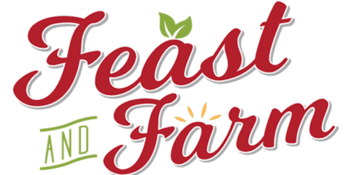

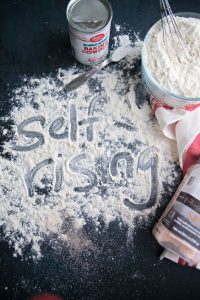


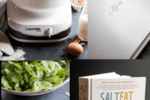
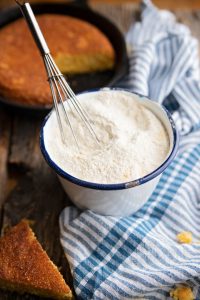
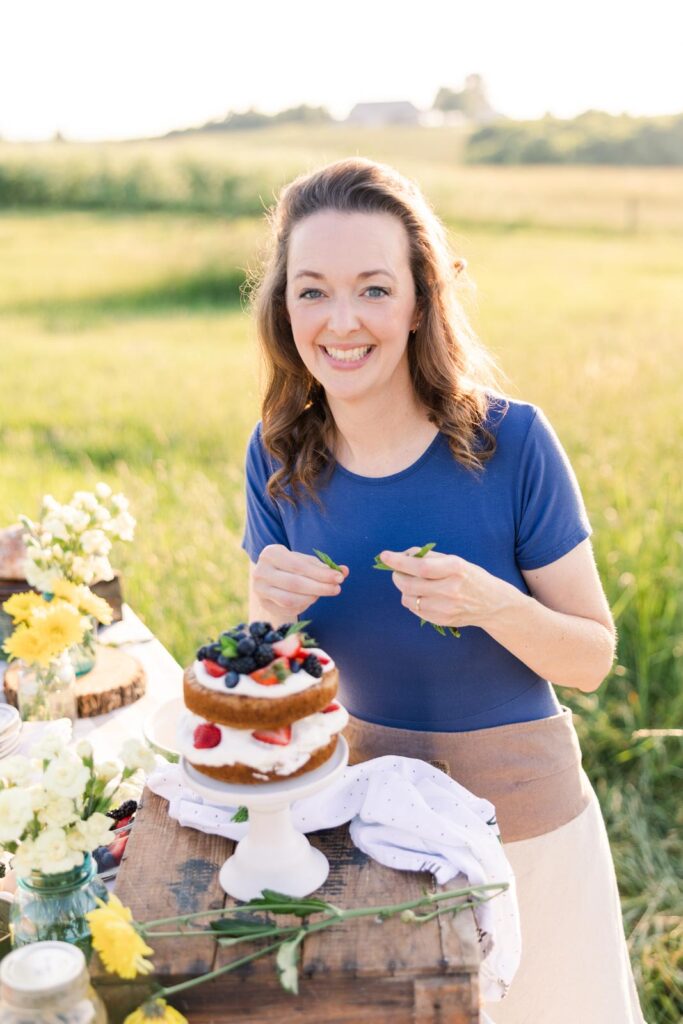
how much water should I add to 3g of yeast? need to know please
It depends on the recipe you are making. Usually your recipe will tell you how much liquid to dissolve your yeast in. Sorry I can’t be of more help. –Rachel
Can I activate yeast in warmed buttermilk?
Yes Dave you sure can! –Rachel
I mixed my yeast with the sugar, butter and milk. The stuff was at right temp. Just put it all together when warm. Did I mess it up?
It depends on what kind of yeast you used Andrea. If you used instant yeast, it will all be fine. That yeast doesn’t require activation in a liquid. If you used active dry yeast it may still turn out okay but the chances are less likely. Active dry needs to be started in a liquid first. –Rachel
I am on keto what do i use in place of sugar when i make bread in my bread machine i tried swerve confectioners but the yeast does not rise like regular sugar i read some where that corn starch works good too
Well Edward, I assume you’re making keto approved breads? Because otherwise bread isn’t typically a part of a keto lifestyle. Either way your bread should rise with or without the added white sugar present. Most keto recipes use erythritol but I’m no expert on that–and it’s not a sweetener that would feed yeast as far as I know. Corn starch also won’t feed yeast. It’s all very dependent on your recipe as to the final texture and result. I know most keto breads are based heavily on eggs and that’s going to make a dense final result no matter how good your yeast is. Very good luck. Keto baking is a tough task! –Rachel
Hi – I live at 10,000 feet. Every single packet of yeast I have ever bought (instant or dry active) has been dead when trying to use it. There is absolutely nothing online that suggests this should be the case. When I do what you suggest here, for example, I get ZERO foaming. Tried with at least a dozen packets, all brands, even bought-yesterday packets. Any thoughts?
Hey William,
Now I’m no expert on high altitude so I did some research. There’s no reason that the yeast won’t activate at high altitude–but there are plenty of other issues with the rise time, measurements and baking to contend with–so that makes me think there’s a flaw in how you’re activating it. Your water may be too hot. That’s my first guess. Your water should only be lukewarm and of course you’ve checked the expiration date on your yeast packet I’m sure. Add it in and wait. I’ve had to wait up to 20 minutes for some of mine to start moving and grooving. If you’d like to write back we can talk more about how you’ve been activating yours and maybe we’ll find the issue. –Rachel
What happens if I used the active dry yeast without activating then after realizing it needed activation I added the activated yeast, is that too much? Will it give the baked goods a funny taste
It shouldn’t bother much. Obviously you don’t want to do that and the yeast you put in without activating may “wake up” a bit once liquid is added, but it probably wouldn’t ruin the dish. –Rachel
I have a recipe that calls for dissolving yeast in three tablespoons of water. I have tried it three times and does not work. Any ideas?
The most important part is making sure that the water isn’t too hot or too cold. Just use it lukewarm and let it sit. It will foam up. Also make sure your yeast isn’t expired before you start. There’s a date on the package. –Rachel
What if I’m using milk? It’s taking forever to foam in warm milk…did I mess it up by whisking it in?
Hey Malina, you probably already have this worked out by now but yes, it should work just the same way. If your milk was too warm when you put the yeast in though you could have easily killed the yeast. Make sure any liquids you add the yeast to are lukewarm at the most. –Rachel
Hi, after doing this, do I still wait for the yeast to rise in the flour?
Hey Lucy, yes you will. These are just the steps to wake the yeast then it will go into your recipe and have the typical rise times as your recipe indicates. –Rachel
Thanks Rachel! It does say dry active yeast, I will try it a different way and see what happens!
Yeah that’s the “normal” kind that requires a liquid. Let me know how it goes!
I have a cinnamon roll recipe that says the yeast should be added to the 2 well beaten eggs and 1 cup of brown sugar. Can that activate yeast? The same recipe needs buttermilk and butter heated and then cooled and added to the sugar, eggs, yeast. It seems I should add the yeast to the buttermilk and butter to activate and then add that to the eggs and sugar.
Hey Daniel, you’re right to question that. Without seeing the recipe, I’d say no. Does the recipe call for INSTANT yeast or DRY ACTIVE/REGULAR yeast? If it calls for instant (also called quick acting in some cases) you can sprinkle that right into your flour dry and it will activate. But if the recipe wants you to use regular yeast, I would put that in your slightly warmed milk (110 to 120 degrees) and let it activate then add it to your other ingredients. You can’t heat an egg warm enough and there’s simply not enough liquid there to activate yeast in it. Sheesh–some of these recipes scare me! –Rachel